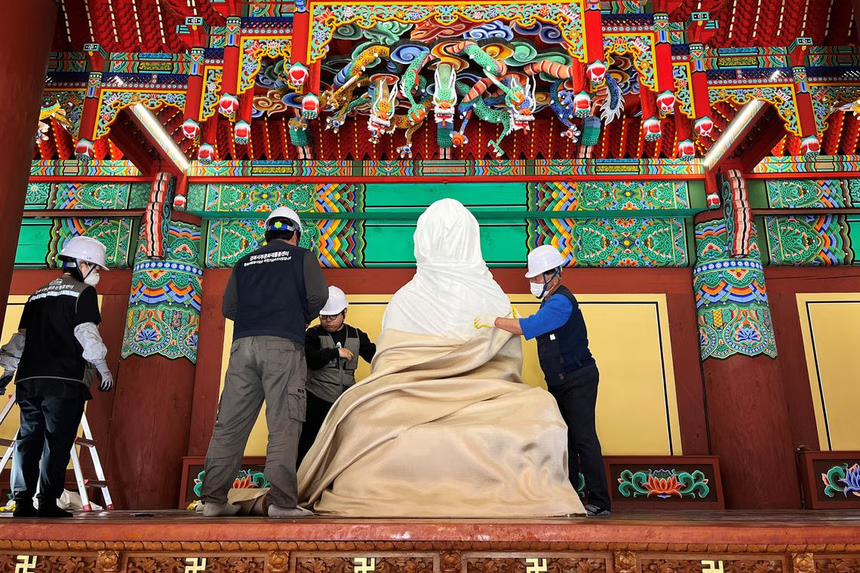Historic Temple
The once-vibrant and colorful Gounsa temple now stands in charred ruins, a haunting reminder of the devastating wildfire that swept across South Korea this week.
The temple, originally built by Buddhist monks in the year 681, was one of the many cultural sites lost or severely damaged in the country’s largest wildfire on record. The blaze, fueled by strong winds, engulfed vast forested areas and towns, killing at least 26 people and leaving a trail of destruction that included priceless historical and religious landmarks.
Gounsa’s chief monk, Deungwoon, described the terrifying speed with which the fire consumed the ancient site. “There was a wind stronger than a typhoon, and flames whipped through the air like a tornado, burning the whole area in an instant,” he said. “The buildings and remains of what Buddhist monks have left over 1,300 years are now all gone.”
Among the ruins, a massive bronze bell, once housed in an ornate tower, lay cracked from top to bottom. Of the three national treasures that once stood at Gounsa, only one survived, while the rest were reduced to ashes.
South Korea’s Korea Heritage Service reported that at least 18 designated heritage sites or cultural objects had been destroyed or damaged as of Thursday, including two national treasures.
Authorities quickly mobilized efforts to protect other historic sites in danger. Around 750 personnel were deployed to safeguard national heritage sites, implementing emergency measures such as preventive spraying, the placement of fire-retardant cloth, and the creation of firebreaks. Additionally, over 1,500 relics were removed from at-risk locations, including Gounsa and old family homes.
In the UNESCO-listed Hahoe Folk Village, authorities worked urgently to protect the thatched-roof houses along the Nakdong River. Fire-retardant materials were applied, and residents were urged to evacuate. Fortunately, as of Thursday, the village remained intact despite the looming threat.
Fire has historically been one of the greatest dangers to South Korea’s traditional wooden architecture, and many temple halls have long maintained bronze bowls of water outside as a symbolic warning of the ever-present risk of flames.
Parts of Gounsa have burned before, including a major fire in 1975, after which a full restoration was completed in 1992. However, the unprecedented scale of destruction this time has left many in shock.
“The sadness is indescribable,” said 70-year-old Kim Young-hoo, a long-time devotee of the temple. “As a follower who cherishes this place, it pains my heart to see it destroyed so horribly.”
South Korea’s main opposition leader, Lee Jae-myung, visited the still-smoking ruins and called for increased efforts to protect other cultural sites that remain under threat. “I heard that traditional temples in nearby areas are also in a dangerous state,” he said, urging authorities to act swiftly to prevent further losses.










